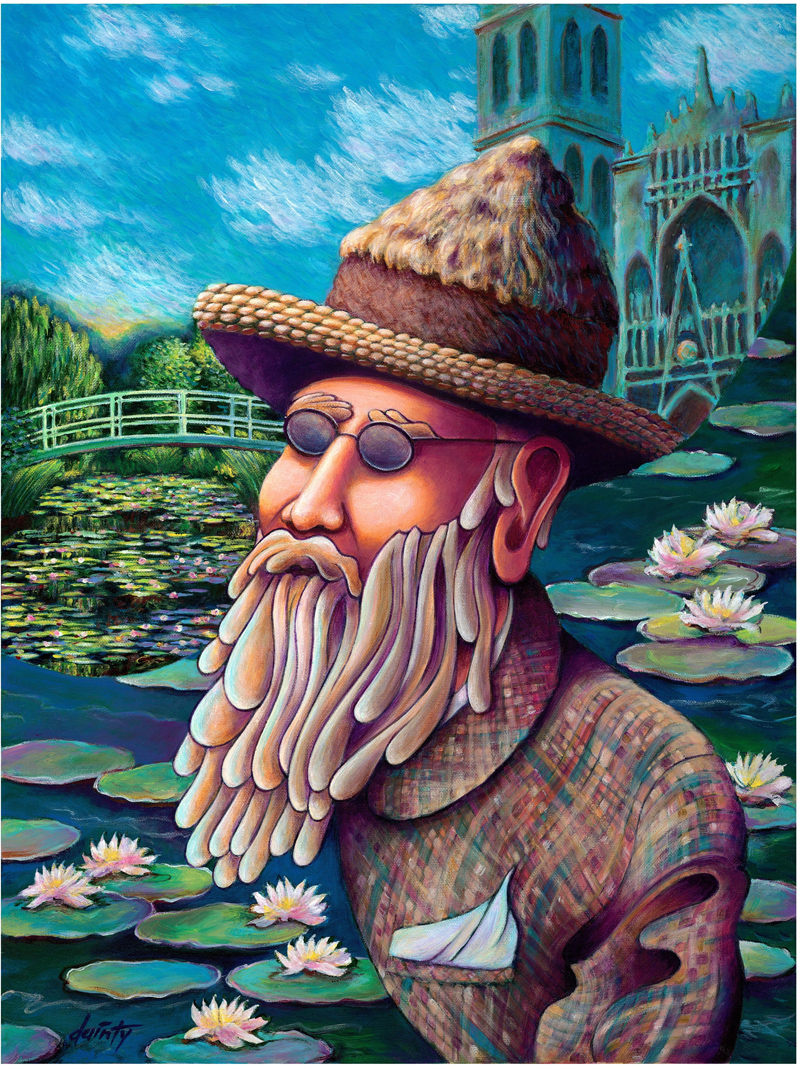
The Art of
Jackson Dainty
![]()
![]()
![]()
![]()
![]()
![]()
![]()


Claude Monet
Fine art Giclee print Inquire about originals
18"x24"
I have chosen some of his passions as a painter to put into this painting. The Japanese foot bridge at Giverny, the water lilies, the haystack in his hat and, of course, Rouen Cathedral. When he was obsessed with a certain thing such as the bridge and water lilies he painted them over and over — in different seasons, different light and using many different color interpretations. He also traveled and worked unceasingly on what he saw during his travels.
Gustave Geoffrey was one of the most versatile and respected writers on art of his generation: Geoffrey wrote reviews, books and catalogues about a number of contemporary painters and sculptors. He met Monet by chance during a visit to Belle Isle in 1886 and developed a great admiration for his work and a warm affection for Monet, the man. Their correspondence reviles Monets most incisive observations of his work. Here is a short letter to Geoffrey from Monet:
Heartfelt thanks for your two fine articles which I'm very proud of. No, I am not a great painter. Neither am I a great poet. I only know that I do what I can to convey what I experience before nature, and that most often, in order to succeed in conveying what I feel, I totally forget the most elementary rules of painting, if they exist that is. In short, I let a good many mistakes show through when fixing my sensations. It will always be the same, and this is what makes me despair.
Thank you for your great and loyal friendship and trust in the no less loyal friendship of your old
Claude Monet
Monet's work is so beautiful. You never see the anxieties he speaks of here.
Why a Master
At the prestigious Paris Salons of the late 19th Century, Monet and his fellow impressionists were dubbed palette scrapers by critics. Undaunted by this scathing insult, the painters or impressionists as they called themselves, opened their own salon and the public soon ignored the critics. Perhaps one of the most significant and radical changes in the direction of art was the result. Out was sentimentality, out was heroic interpretation and in came light and air and space. Beauty in the flower, beauty in the garden. Beauty for beautys' sake; filtered through the artists emotional and spiritual core.










